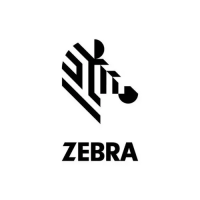
Do you have a question about the Zebra GK420d and is the answer not in the manual?
| Print technology | Direct thermal |
|---|---|
| Network ready | Yes |
| Dimensions (WxDxH) | 171 x 209 x 152 mm |
| Standard interfaces | RS-232, USB 1.1 |
| Internal memory | 8 MB |
| Maximum label width | 108 mm |
| Maximum label length | 0.991 m |
| Product color | Black, Grey |
| Power requirements | 100-240 VAC, 50-60 Hz |
| Depth | 209 mm |
|---|---|
| Width | 171 mm |
| Height | 152 mm |
| Weight | 3200 g |
Identifies the intended audience for this user guide.
Explains the structure and organization of the user guide.
Provides contact information for Zebra Technologies support and sales.
Details symbols, formatting, and text conventions used in the manual.
Provides an overview of the GK Series thermal printers and their features.
Lists the items included in the printer packaging.
Details procedures for unpacking and inspecting the printer for damage.
Identifies the main external components and ports of the printer.
Highlights key hardware components and optional features of the printer.
Describes the printer's buttons and status indicators for operation.
Step-by-step instructions for connecting the printer's power supply.
Guides on how to prepare and load roll media into the printer.
Procedure to print a label verifying printer configuration and function.
Instructions for installing Windows printer drivers before connecting the printer.
Details on connecting the printer to a computer via various interfaces.
Steps to verify printer connectivity and test print jobs after setup.
How to print and interpret the printer's configuration status label.
Recommendations for storing the printer to prevent damage.
Safety precautions and notes regarding the hot printhead during thermal printing.
Describes various printing modes like Tear-Off, Dispense, Stand-alone, and Network.
Details different media types (roll, fan-fold, tag) and selection criteria.
Instructions for reloading media when supplies run out.
Guides on setting print width and adjusting print quality for optimal output.
Explains automatic media detection and manual calibration procedures.
Procedure for loading and printing with fan-fold media.
Considerations for using externally mounted media rolls with the printer.
Details font support, character sets, and language localization options.
How to configure and operate the printer without a connected computer.
Methods for sending files and using the print meter function.
Information on using the EPL Line Mode for printing.
How to install and use the optional label dispenser.
Details the internal Ethernet print server for network connectivity.
Information on the Keyboard Display Unit accessory for EPL forms.
Features and capabilities of the KDU Plus accessory.
Overview of the ZBI 2.0 language for custom printer operations.
Guidelines and supplies for cleaning the printer's components.
Step-by-step instructions for cleaning the printer's printhead.
Procedures for cleaning the media path, guides, and sensors.
How to clean or replace the printer's platen roller.
Information on other maintenance aspects and troubleshooting references.
Instructions for safely removing and installing a new printhead.
Explanation of printer status light colors and patterns.
Troubleshooting steps for common status light error indicators.
Diagnosing and resolving issues related to print quality.
Steps for manually calibrating the printer for media sensing.
Performing diagnostic tests like printing configuration labels.
Procedure to reset printer settings to factory default values.
Entering diagnostics mode to check data transfer between printer and PC.
Details various printer modes activated by the Feed button.
Wiring details for connecting the printer via USB.
Wiring diagram and pinouts for the parallel interface.
Pinout assignments for the Ethernet (RJ45) cable.
Wiring specifications for serial port connections (DTE/DCE).
Diagrams showing external physical dimensions of the printer.
Diagram showing external physical dimensions with label dispenser.
Overview of changing and saving ZPL printer settings.
Mapping ZPL configuration settings to their corresponding commands.
Managing printer memory, objects, and status reports with ZPL commands.